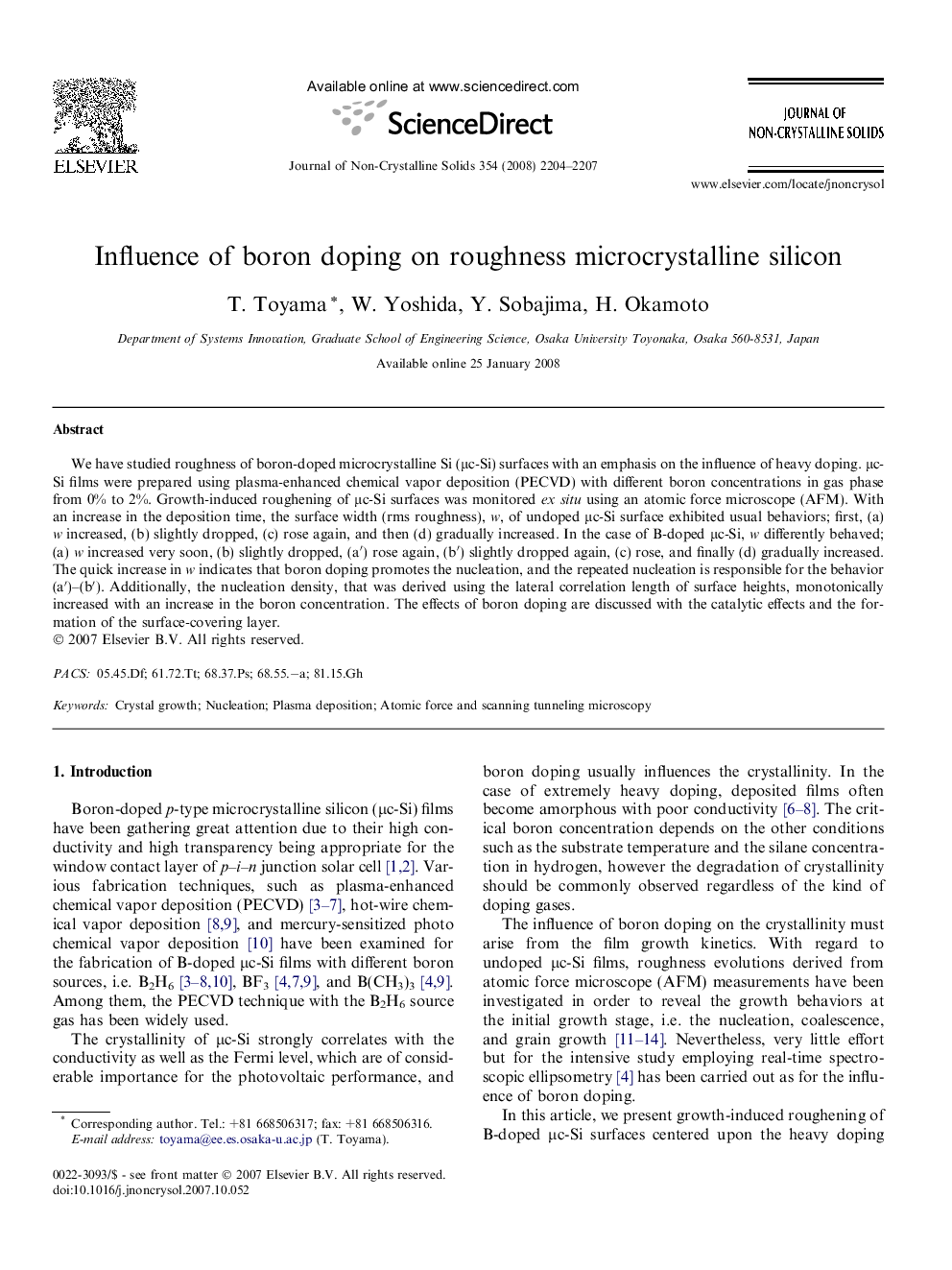| Article ID | Journal | Published Year | Pages | File Type |
|---|---|---|---|---|
| 1484668 | Journal of Non-Crystalline Solids | 2008 | 4 Pages |
We have studied roughness of boron-doped microcrystalline Si (μc-Si) surfaces with an emphasis on the influence of heavy doping. μc-Si films were prepared using plasma-enhanced chemical vapor deposition (PECVD) with different boron concentrations in gas phase from 0% to 2%. Growth-induced roughening of μc-Si surfaces was monitored ex situ using an atomic force microscope (AFM). With an increase in the deposition time, the surface width (rms roughness), w, of undoped μc-Si surface exhibited usual behaviors; first, (a) w increased, (b) slightly dropped, (c) rose again, and then (d) gradually increased. In the case of B-doped μc-Si, w differently behaved; (a) w increased very soon, (b) slightly dropped, (a′) rose again, (b′) slightly dropped again, (c) rose, and finally (d) gradually increased. The quick increase in w indicates that boron doping promotes the nucleation, and the repeated nucleation is responsible for the behavior (a′)–(b′). Additionally, the nucleation density, that was derived using the lateral correlation length of surface heights, monotonically increased with an increase in the boron concentration. The effects of boron doping are discussed with the catalytic effects and the formation of the surface-covering layer.
